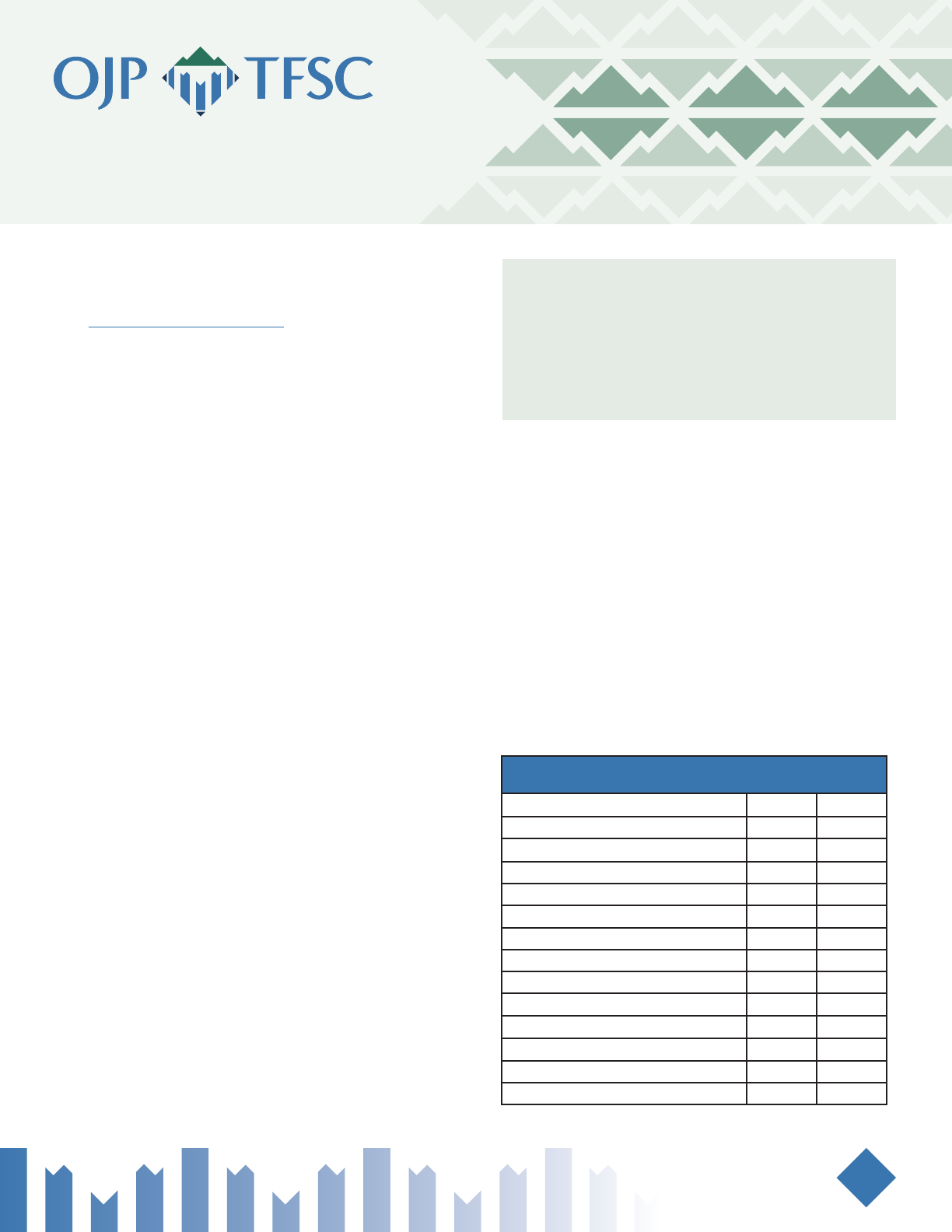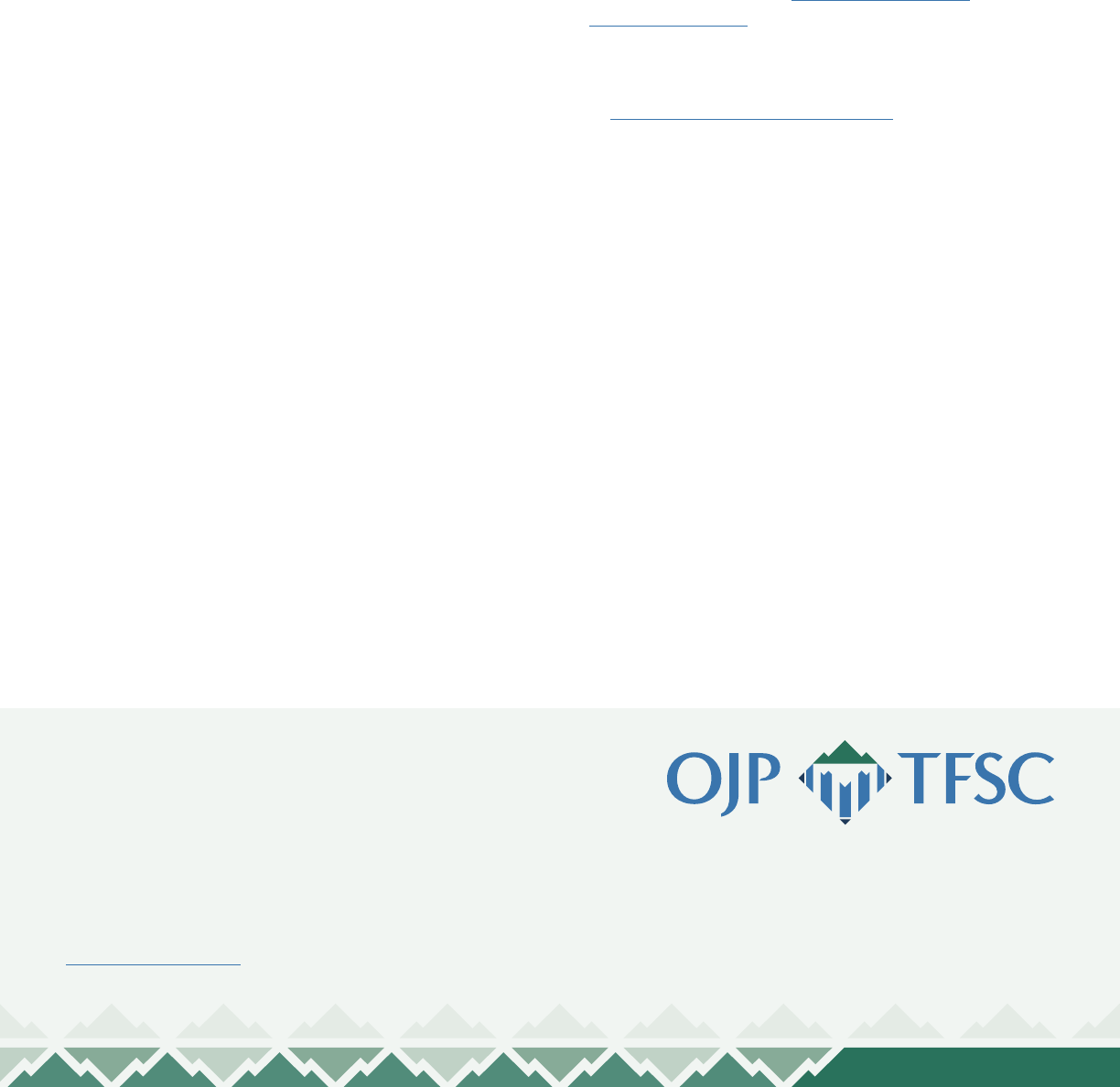
1
Bank Reconciliation
Guide Sheet
Grant Financial Management
Requirement
The DOJ Grants Financial Guide states: “Award
recipients must conduct a nancial reconciliation
of their accounting records to the nal Federal
Financial Report (FFR/SF-425) at closeout.” Financial
reconciliation is an accounting process that explains
the dierence, on a specied date, between the
balance shown in two dierent accounts records.
Important Information to Know
For a bank reconciliation, you are making sure
an entity’s accounting records match the balance
shown on the entity’s bank statement. The dierence
that occurs is due to items reected on the entity’s
accounting records that have not yet been recorded
by the entity’s bank. The bank reconciliation is used
to compare the cash balance on the bank statement
with the corresponding information presented in the
general ledger. This process provides the opportunity
to recognize irregularities.
What information is needed to reconcile a bank
account?
The bank reconciliation requires the follow
information:
f General ledger account balance for the bank account
being reconciled.
f Bank statement, which is a document sent by the
bank or nancial institution showing the transactions
posted to a bank account during a specic period
(usually 30 days).
f Deposits recorded in the general ledger account,
which have not yet been received and recorded by the
bank.
f Checks written and recorded in the general ledger
account but have yet to clear the bank account.
What is the bank reconciliation process?
The rst step of the bank reconciliation process is to
compare the business records deposits to the bank
statements deposits, and mark the items that are
located on both records. Once that is completed, add
the deposits in transit and deduct the outstanding
checks and other bank errors/corrections to
appropriately adjust the bank balance. The nal part
of the process is to adjust the cash balance by adding
interest and receivables and deducting monthly
charges and any overdraft fees. You can track these
steps in the sample bank reconciliation statement
shown in Exhibit 1.
Exhibit 1. Sample Bank Reconciliation Statement
Bank Reconciliation Statement
Month ended March 31, 2020
Ending balance as per bank statement $100,000
Addition: Deposits in transit $20,000
Deduction: Outstanding checks
Check #547 $5,000
Check #549 $3,500
Check #560 $12,500 $21,000
Adjusted bank balance $99,000
Ending balance per accounting records $97,600
Receivables $2,000
Interest earned $50 $2,050
Deduction
EFT for utilities $745
Service charges $45 $790
Adjusted cash balance $99,000
Grant Financial Management
Requirement
The DOJ Grants Financial Guide states: “Award
recipients must conduct a nancial reconciliation
of their accounting records to the nal Federal
Financial Report (FFR/SF-425) at closeout.” Financial
reconciliation is an accounting process that explains
the dierence, on a specied date, between the
balance shown in two dierent accounts records.
Important Information to Know
For a bank reconciliation, you are making sure
an entity’s accounting records match the balance
shown on the entity’s bank statement. The dierence
that occurs is due to items reected on the entity’s
accounting records that have not yet been recorded
by the entity’s bank. The bank reconciliation is used
to compare the cash balance on the bank statement
with the corresponding information presented in the
general ledger. This process provides the opportunity
to recognize irregularities.
What information is needed to reconcile a bank
account?
The bank reconciliation requires the follow
information:
f General ledger account balance for the bank account
being reconciled.
f Bank statement, which is a document sent by the
bank or nancial institution showing the transactions
posted to a bank account during a specic period
(usually 30 days).
f Deposits recorded in the general ledger account,
which have not yet been received and recorded by the
bank.
f Checks written and recorded in the general ledger
account but have yet to clear the bank account.
What is the bank reconciliation process?
The rst step of the bank reconciliation process is to
compare the business records deposits to the bank
statements deposits, and mark the items that are
located on both records. Once that is completed, add
the deposits in transit and deduct the outstanding
checks and other bank errors/corrections to
appropriately adjust the bank balance. The nal part
of the process is to adjust the cash balance by adding
interest and receivables and deducting monthly
charges and any overdraft fees. You can track these
steps in the sample bank reconciliation statement
shown in Exhibit 1.
Exhibit 1. Sample Bank Reconciliation Statement
Bank Reconciliation Statement
Month ended March 31, 2020
Ending balance as per bank statement $100,000
Addition: Deposits in transit $20,000
Deduction: Outstanding checks
Check #547 $5,000
Check #549 $3,500
Check #560 $12,500 $21,000
Adjusted bank balance $99,000
Ending balance per accounting records $97,600
Receivables $2,000
Interest earned $50 $2,050
Deduction
EFT for utilities $745
Service charges $45 $790
Adjusted cash balance $99,000
Deposits in transit—funds received and
recorded in a company’s records that have not
yet been processed by the bank.
Outstanding checks—checks that were issued
but have not yet been cleared by the bank.

How This Applies to Your Grant
Reconciliation throughout the grant is important in
making sure that records are matching at the end
of the accounting periods. Through reconciliation,
grantees can identify errors and fraudulent activities
and work toward addressing them. Per the DOJ
Grants Financial Guide, grant fraud includes failure to
adequately account for, track, or support transactions.
Grantees have the responsibility to ensure that all
their federal funds are accounted for and being used
as authorized by OJP.
The appropriate internal control process is to provide
for separation of duties for the individuals preparing
the reconciliation. An employee who is not involved
with recording cash receipts and disbursement
of accounting transactions should be the one
responsible for completing the reconciliations. This
internal control process also helps deter fraud.
Additionally, all bank accounts should be reconciled
at least monthly, within 30 days of receiving the bank
statement. The reconciliation documentation should
be saved so it is available during the annual audit
process.
Resources
U.S. Department of Justice. (2017). DOJ
Grants Financial Guide. https://www.ojp.gov/
DOJFinancialGuide.
OJP TFSC oers resources on a variety of grants nancial
management topics, which can be found on our website
at https://www.ojp.gov/tfsc/resources.
About the OJP Territories
Financial Support Center
The Oce of Justice Programs Territories Financial
Support Center (OJP TFSC) oers free resources,
training, and technical assistance for grantees in the
U.S. territories. OJP TFSC services focus on building nancial
management capacity and can be accessed by emailing
[email protected] via our Virtual Support Center.
This product was prepared under contract/call order number
GS-00F-010CA/15PCFD20F00000200 awarded by the Oce of Justice
Programs, U.S. Department of Justice and does not constitute nancial
or other professional advice. The opinions, ndings, and conclusions
expressed in this product are those of OJP TFSC and do not represent
the ocial position or policies of the U.S. Department of Justice.
OJP.GOV/ T FS C
